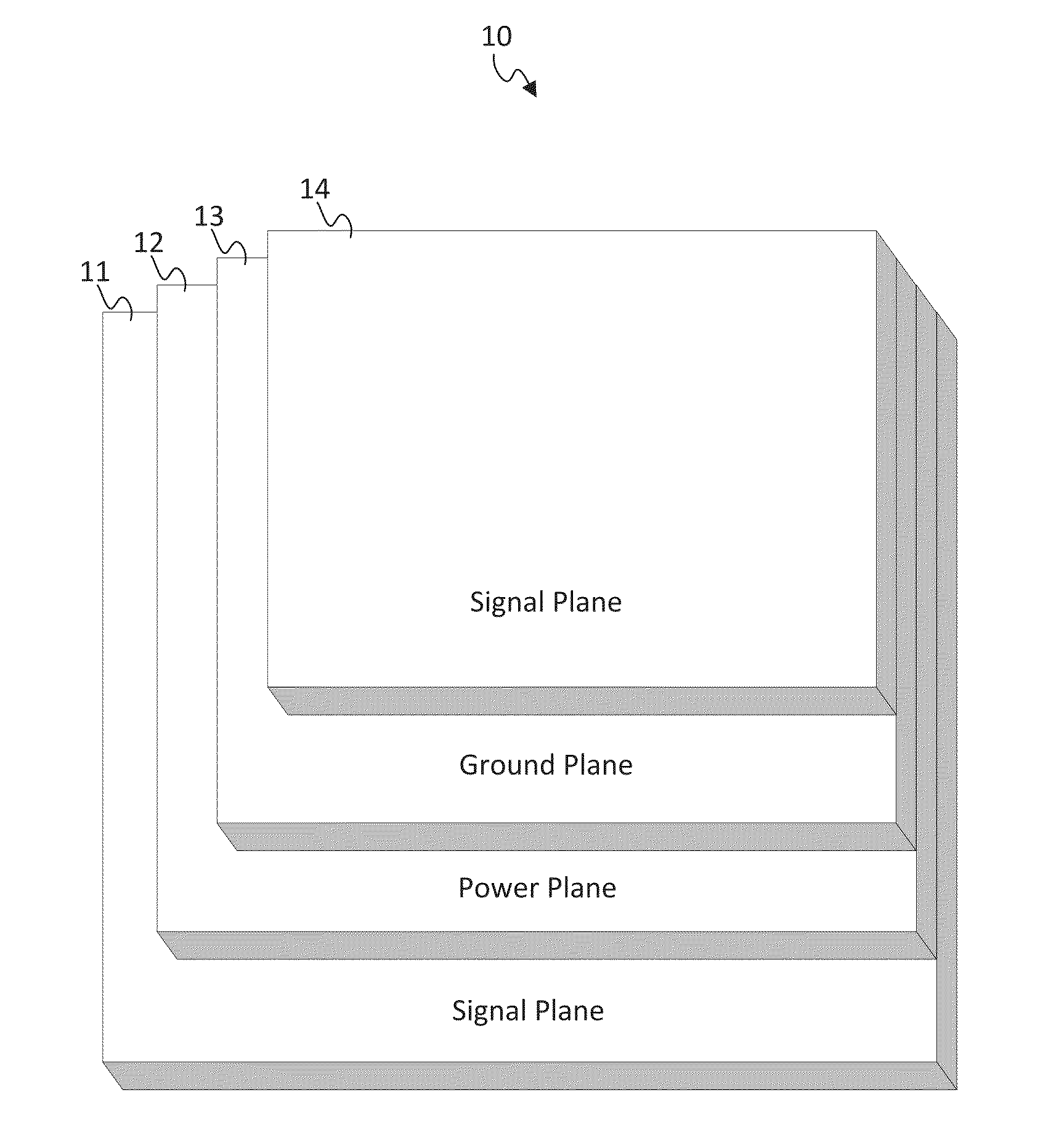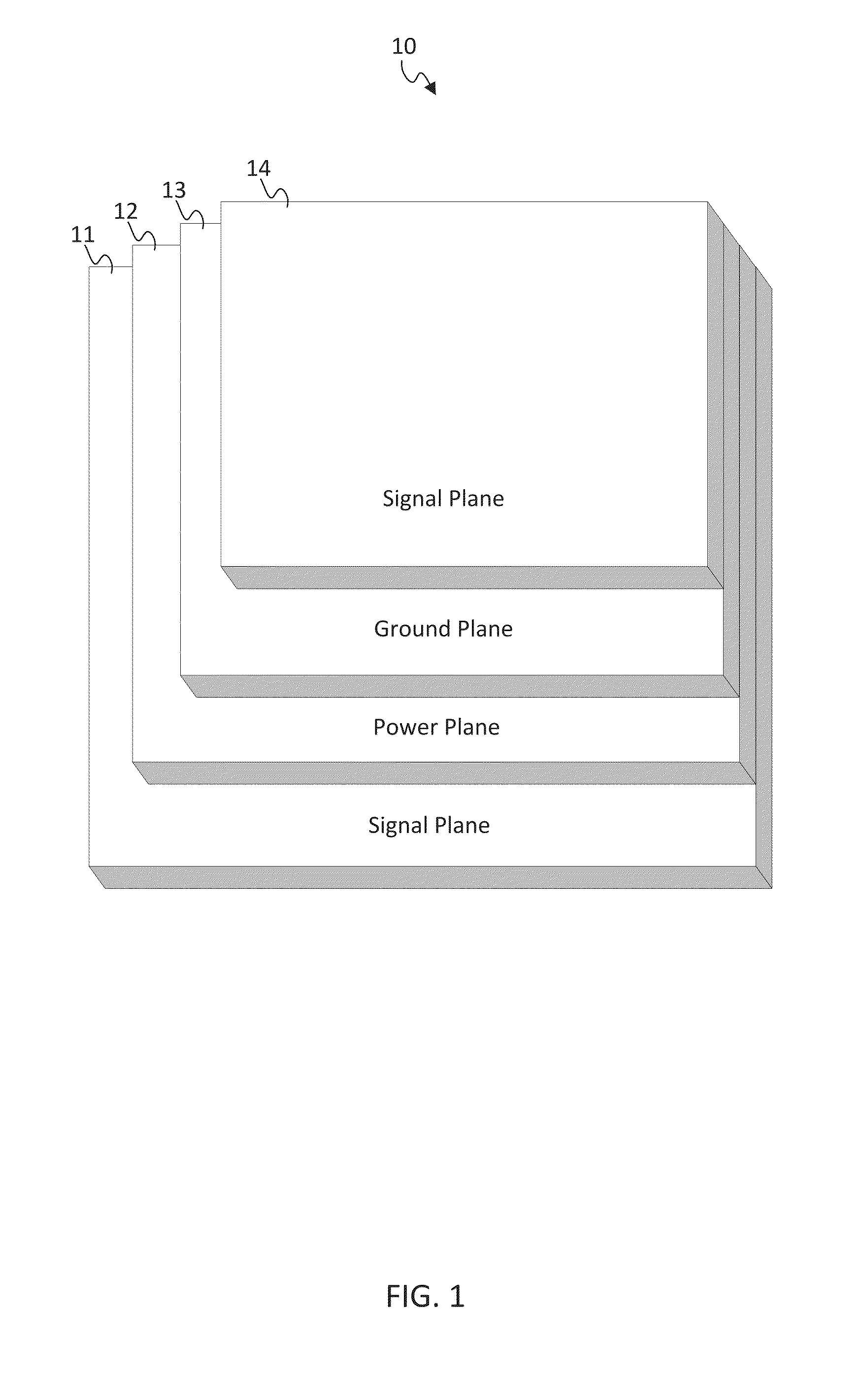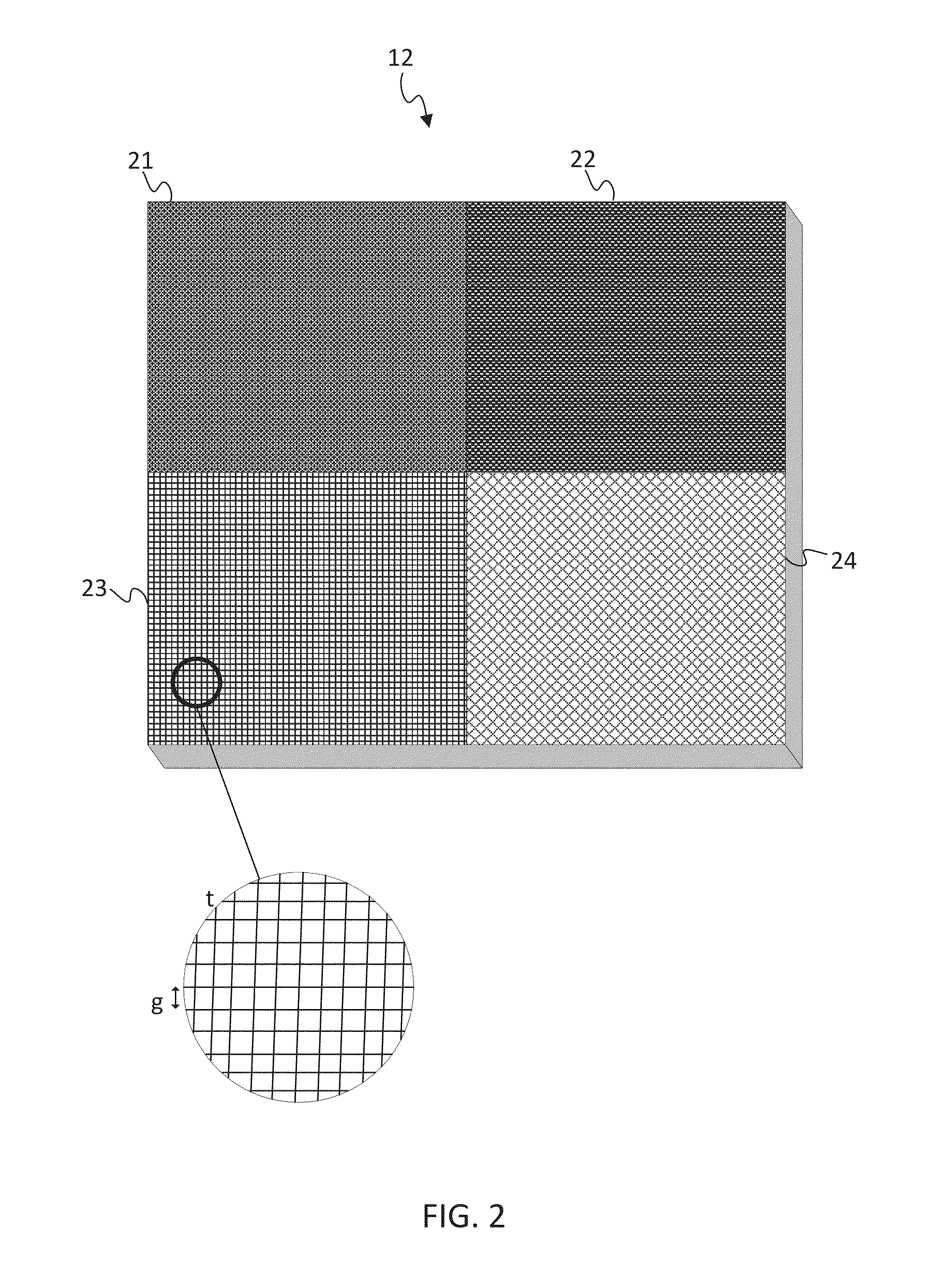Current Redistribution in a Printed Circuit Board
a technology of printed circuit board and current, applied in the direction of printed circuit non-printed electric components association, electrical apparatus contruction details, cad circuit design, etc., can solve the problems of high resistance drop, open circuit, or brownout, and delamination of the pcb
- Summary
- Abstract
- Description
- Claims
- Application Information
AI Technical Summary
Benefits of technology
Problems solved by technology
Method used
Image
Examples
example embodiments
[0021]A challenge in high end routing platforms is printed circuit board (PCB) density. Each generation of electronics demands significant increases in current, yet PCB space generally stays the same. The resulting increase in current density pushes the limits of through hole vertical interconnect accesses (vias) near load devices, such as voltage regulator modules. Due to positioning, different load devices may undesirably receive different amounts of current. The relative current distribution depends on the resistance from source to load. Selectively increasing the resistance in a path redistributes the current. The following embodiments include techniques to selectively redistribute current in a power plane of the PCB.
[0022]FIG. 1 illustrates a multilayered printed circuit board 10. The multilayered printed circuit board 10 may have any number and / or types of layers or planes. The multilayered printed circuit board 10 shown in FIG. 1 includes a first signal plane 11, a power plan...
PUM
 Login to View More
Login to View More Abstract
Description
Claims
Application Information
 Login to View More
Login to View More - R&D
- Intellectual Property
- Life Sciences
- Materials
- Tech Scout
- Unparalleled Data Quality
- Higher Quality Content
- 60% Fewer Hallucinations
Browse by: Latest US Patents, China's latest patents, Technical Efficacy Thesaurus, Application Domain, Technology Topic, Popular Technical Reports.
© 2025 PatSnap. All rights reserved.Legal|Privacy policy|Modern Slavery Act Transparency Statement|Sitemap|About US| Contact US: help@patsnap.com



